Fluidyn MP
A comprehensive multiphysics simulation platform
Fluidyn-MP is a general multiphysics platform combining multiple solvers and numerical schemes to model complex physics associated and interacting with fluid dynamics. Each of its modules is designed to address a field of multiphysics modelling :
- Module NS : fluid flow resolution for various types of fluidyn : incompressible / compressible, reactive, transient, 2-phase, etc.
- Module CHT : coupling fluid flow with heat transfer : convection, conduction and radiation
- Module FSI : Fluid-structure interaction for displacements and deformation as well as structural and thermal-induced stresses
- Module EMG : fluid-structure interaction with electromagnetism
- Module MHD : Magneto-hydrodynamics
- Module DSMC : Rarefied gas flow
The innovative coupling at play in fluidyn-MP combines the advantages of the Finite Volume Method (FVM) to solve fluid flow problems with the advantages of the Finite Element Method (FEM) to solve stress, thermal and magnetic fields.
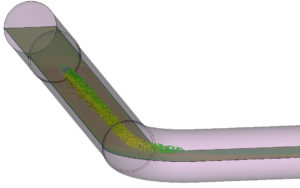
fluidyn-NS : Fluid flow simulation
fluidyn–NS is the module for Computational Fluid Dynamics (CFD) designed to simulate internal or external flows in complex 3D geometries with high precision finite volume schemes.
The numerous numerical schemes available offer an accurate representation of a large range of flows, from incompressible to highly compressible flows, from free surface to discrete particle-ladden flows and from steady to highly unsteady flows (explosions).
It can handle 3D multi-block structured or unstructured (or hybrid) stationary or moving mesh.
fluidyn–MP NS offers an user-friendly graphical interface consisting of pre- and post-processor and a wide range of parallelized solvers.
- Reactive flows and combustion
- Turbulence : 2-equations RANS models ; LES/DES
- Physical and thermodynamic properties : ideal and real gases, non-Newtonian fluids
- Two-phase flows : free-surface flows, Eulerian and Lagrangian methods for dispersed flows with particles, bubbles and droplets
- Porous media
fluidyn-CHT : Conjugate Heat Transfer
The fluidyn-CHT module (Conjugate Heat Transfer) is dedicated to the simulation of heat transfer in fluid and structures : conduction, convection and radiation.
The numerical methods have been chosen in order to model as precisely as possible each domain : fluids and structures with a timestep adapted to each domain of resolution thus reducing the computational cost of the conjugate heat transfer modelling.
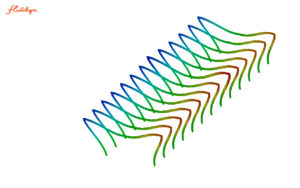
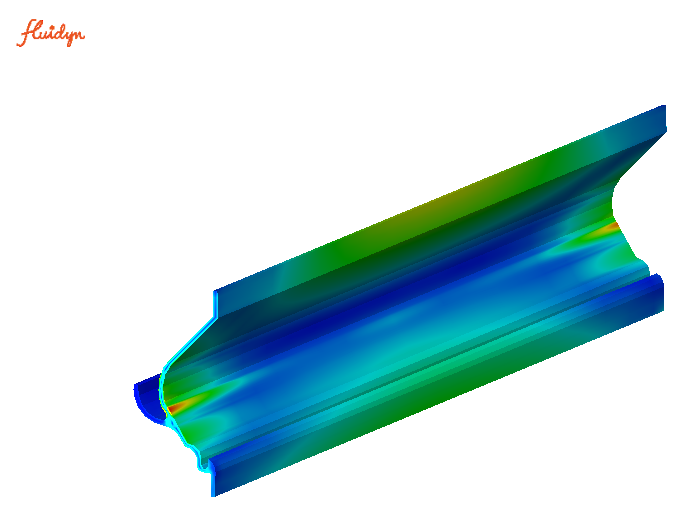
fluidyn-FSI : Coupling Fluid and Structures
Fluidyn-MP-FSI (Fluid Structure Interaction) is dedicated to the coupling of fluid dynamics in FVM with structural mechanics in FEM.
fluidyn-FSI computes the mechanical stress and constraints in the structures induces by the fluid pressures and temperatures. In return, the structural deformations and displacements influence the behaviour of the fluid at each timestep towards resolution of the coupled case.
As in fluidyn-CHT, the strong coupling necessary for a fast and accurate simulation of the multiphysic phenomenon is ensured by the coupling of the best solution techniques for each domain: Finite Volume (FV) for fluid flow calculations and Finite Elements (FE) for structures, exchanging boundary conditions at each time step.
The fluid mesh in contact with the structure deforms automatically (auto-adaptive mesh) following the structural deformation.
fluidyn-CAF : Coupling Fluids and Acoustics
Acoustic reflection in cavities of any pulsating flow from compressors or vortices generated by vibrations may make the flow unstable. This instability may be further damaging if structural modes are at frequencies close to the cavity acoustics.
Fluidyn CAF calculates acoustic frequencies in 3D cavities or 1D piping system. They are used to compare with structural Eigen frequencies and flow induced vibraions.

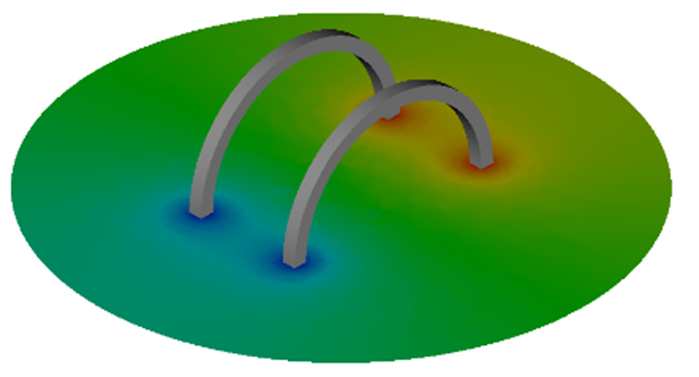
fluidyn-MHD : Magneto-Hydro-Dynamics
Fluidyn-MHD is specifically developed for the dynamics of electrically conducting fluids like plasmas, liquid metals, and salt water. The magnetic fields induce currents in a moving conductive fluid, which create forces on the fluid, and change the magnetic field itself.
A boundary-layer based integral approach is used for analyzing the coupled problem of electro-magneto-hydrodynamic convection and melting of an electrically conducting material.
fluidyn-EMG : Electromagnetism
Fluidyn-EMG uses industry-leading electromagnetic field solvers to predict the behaviour of electrical and electromechanical devices. It helps design, simulate and validate complex, high-performance components, circuits, and systems for automotive, industrial automation, and aerospace applications. :
- Electromechanical: Electric motors and generators, transformers, bus bars, relays, solenoids, power electronics, MEMS and magnet design
- High-speed electronic components: On-chip embedded passives, IC packages, PCB interconnects
- High-frequency devices, antennas, RF/microwave components, EMI/EMC and biomedical devices
- Device performance characteristics under applied excitations
- Visualization of the electromagnetic field in and around a device
- Joule heating effects and resultant temperatures
- Force distribution and resulting deformation
- Key design parameters: torque, force, resistance, inductance, capacitance, impedance parameters and radiated fields/emissions
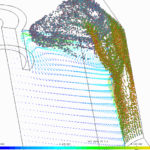
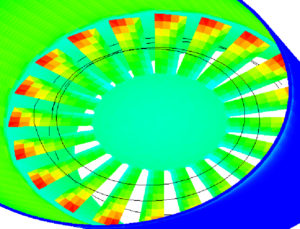
fluidyn-DSMC : Rarefied Gas Dynamics
In situations of vacuum, the discrete molecular effects of the gas prevail over the continuous medium characteristics.
Applications:
- Atomic molecular physics : vacuum technology, charged-particle traps
- Upper stmosphere research
- Gas chromatography
- Medical applications: Respiratory or blood gas analysis,
- Environmental applications: detection of pollutants in air, water analysis
